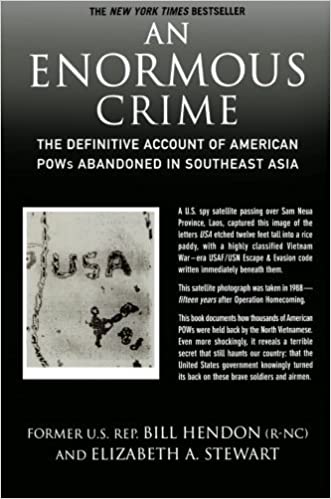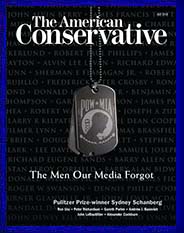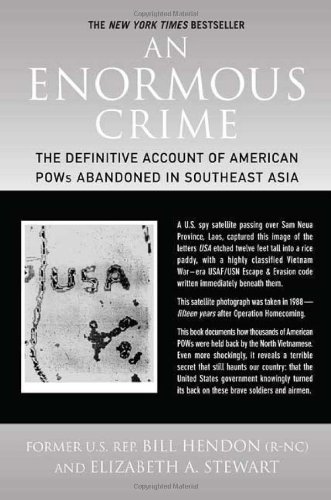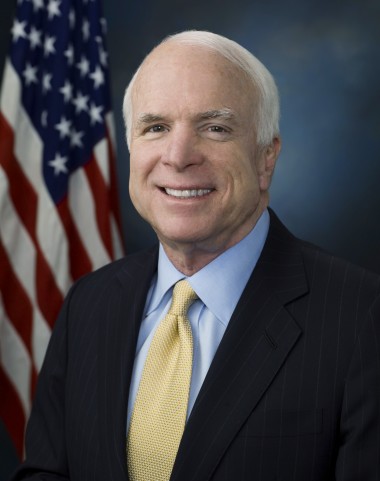A Story Too Big For The New York Times by Ron Unz
QUOTE
I recently spent a few weeks
producing
print collections of my lengthy American Pravda series, deciding to finally make the articles available in hard copy.
The first volume was entitled Encountering American Pravda and contained my earliest pieces. Running a slender 150 pages, it can easily be read in just a day or two, and is ideally suited for introducing newcomers to the controversial material. Thus, it serves as a wading-pool, preparing readers for the deeper waters and far more explosive contents in the rest of the series, which together constitute a historical counter-narrative to the events of the last one hundred years.
- The American Pravda Series
Ron Unz • The Unz Review • 423,000 Words
I dedicated the book to a famed New York Times journalist, whose work had inspired the entire series:
To the Memory of Sydney Schanberg,
Who Opened My Eyes About the American Media
The reference is explained in the short introduction that follows:
A major turning-point in my views came when I stumbled across the astonishing work of Pulitzer Prize winner Sydney Schanberg, one of America’s most esteemed Vietnam War journalists and a former top editor at the New York Times. He had spent years compiling a mountain of compelling evidence implicating our national leaders in a monumental act of wartime treachery, with Sen. John McCain being a central figure in covering up that scandal. Yet although this shocking material was released at the height of McCain’s 2008 presidential run, it was entirely ignored by virtually all of our media outlets, liberal and conservative alike.
If a story so important and so well-documented by such a writer could be disregarded by all our journalists, then our mainstream media merely constituted an American Pravda, just as distorted and dishonest as the notorious Soviet propaganda organ of that name.
Schanberg’s passing in 2016 prompted me to write a tribute to his remarkable journalism and that piece launched my own American Pravda series. Having recently reread it for my collection, I think that portions of the story I told are even more relevant today and worth quoting at length:
- American Pravda: The Legacy of Sydney Schanberg
Ron Unz • The Unz Review • July 13, 2016 • 3,500 Words
The death on Saturday of Sydney Schanberg at age 82 should sadden us not only for the loss of one of our most renowned journalists but also for what his story reveals about the nature of our national media.
Syd had made his career at the New York Times for 26 years, winning a Pulitzer Prize, two George Polk Memorial awards, and numerous other honors. His passing received the notice it deserved, with the world’s most prestigious broadsheet devoting nearly a full page of its Sunday edition to his obituary, a singular honor that in this degraded era is more typically reserved for leading pop stars or sports figures. Several photos were included of his Cambodia reporting, which had become the basis for the Oscar-winning film The Killing Fields, one of Hollywood’s most memorable accounts of our disastrous Indo-Chinese War.
But for all the 1,300 words and numerous images charting his long and illustrious journalistic history, not even a single mention was made of the biggest story of his career, which has seemingly vanished down the memory hole without trace. And therein lies a tale.
Could a news story ever be “too big” for the media to cover? Every journalist is always seeking a major expose, a piece that not merely reaches the transitory front pages but also might win a journalistic prize or even change the history books. Stories such as these appear rarely but can make a reporter’s career, and it is difficult to imagine a writer turning one down, or an editor rejecting it.
But what if the story is so big that it actually reveals dangerous truths about the real nature of the American media, portrays too many powerful people in a very negative light, and perhaps leads to a widespread loss of faith in our major news media? If readers were to see a story like that, they might naturally begin to wonder “why hadn’t we ever been told?” or even “what else might be out there?”
Towards the end of the 2008 presidential campaign, while John McCain battled Barack Obama for the White House, I clicked an intriguing link on a small website and discovered Syd’s remarkable expose, one which had been passed over or rejected by every major media outlet in the country, his enormous personal reputation notwithstanding.
The basic outline of events he described was a simple one. During the Paris Peace Talks that ended the Vietnam War, the U.S. government had committed to pay its Hanoi adversaries $3.25 billion in war reparations, and in exchange would receive back the American POWs held by the Vietnamese. The agreement was signed and the war officially ended, but the Vietnamese, suspecting a possible financial double-cross, kept back many hundreds of the imprisoned Americans until they received the promised payment.
For domestic political reasons, the Nixon Administration had characterized the billions of dollars pledged as “humanitarian assistance” and Congress balked at appropriating such a large sum for a hated Communist regime. Desperate for “peace with honor” and already suffering under the growing Watergate Scandal, Nixon and his aides could not admit that many hundreds of the POWs remained in enemy hands, and so declared them all returned, probably hoping to quietly arrange a trade of money for prisoners once the dust had settled. Similarly, Hanoi’s leaders falsely claimed that all the captives had been released, while they waited for their money to be paid. As a result, the two governments had jointly created a Big Lie, one which has largely maintained itself right down to the present day.
In the troubled aftermath of America’s military defeat and the Nixon resignation, our entire country sought to forget Vietnam, and neither elected officials nor journalists were eager to revisit the issue, let alone investigate one of the war’s dirtiest secrets. The Vietnamese continued to hold their American prisoners for most of the next twenty years, periodically making attempts to negotiate their release in exchange for the money they were still owed, but never found a American leader daring enough to take such a bold step. The Big Lie had grown just too enormous to be overturned.
Over the years, rumors surrounding the remaining POWs became widespread in veterans’ circles, and eventually these stories inspired a series of blockbuster Hollywood movies such as Rambo, Missing in Action, and Uncommon Valor, whose plots were all naturally dismissed or ridiculed as “rightwing conspiracy theories” by our elite media pundits. But the stories were all true, and even as American filmgoers watched Sylvester Stallone heroically free desperate American servicemen from Vietnamese prisons, the real-life American POWs were still being held under much those same horrible conditions, with no American leader willing to take the enormous political risk of attempting either to rescue or ransom them. Over the years, many of the POWs had died from ill-treatment, and the return of the miserable survivors after their secret captivity would unleash a firestorm of popular anger, surely destroying the many powerful individuals who had long known of their abandonment.
Eventually, America’s bipartisan political leadership sought to reestablish diplomatic relations with Hanoi and finally put the Vietnam War behind the country, but this important policy goal was obstructed by the residual political pressure from the resolute POW families. So a Senate Select Committee on the POWs was established in order to declare their non-existence once and for all. Sen. John McCain, a very high profile former POW himself, led the cover-up, perhaps because the very dubious nature of his own true war record left him eager to trade secrecy for secrecy. Despite considerable evidence to the contrary, our media declared that the abandoned POWs had never existed and closed the books on the long, lingering controversy.
As it happens, not long after the committee issued its final report and shut down, a stunning document was unearthed in the newly-opened Kremlin archives. In the transcript of a Hanoi Politburo meeting, the Communist leadership discussed the true number of POWs they then held and made their decision to keep half of them back to ensure that America paid the billions of dollars it had promised. Former National Security Advisors Zbigniew Brzezinski and Henry Kissinger both stated on national television that the document appeared genuine and it seemed undeniable that American POWs had indeed been left behind. Although the national media devoted a couple of days of major coverage to this uncomfortable revelation, it then reported denials from both the U.S. and Vietnamese governments, and quickly dropped the story, returning to the official narrative: There were no abandoned POWs and never had been.
As I reviewed Syd’s massively-documented 8,000 word exposition, and confirmed for myself that the bylined Sydney Schanberg was indeed the Sydney Schanberg, I experienced a growing sense of unreality. I was reading what might rank as “the story of the century,” a scandal vastly greater and more gripping than the sordid political abuses of Watergate or Iran-Contra, a tale of national treachery suppressed for forty years by our government and our media, but now broken by one of America’s most distinguished journalists. The gravest possible charges were being levied against Sen. John McCain, the Republican nominee, coming right at the height of his presidential campaign. And not one word of this was being mentioned in any of our mainstream media outlets, while almost all of the thousands of political websites, large and small alike, remained just as silent. From that day forward, I have never looked upon our national media with the same eye.
Everyone to whom I showed the article was just as shocked as myself, except for one or two individuals with a strong Vietnam War background, who privately confirmed that it was all probably true.
The election came and went with McCain’s defeat, and the incoming Obama Administration began coping with the intensifying financial crisis, but I still couldn’t put Syd’s remarkable article out of my mind, nor the deafening silence it had received. Perhaps, I thought to myself, the piece had been ignored because it appeared on a small website with few readers, and the unprepossessing circumstances of its release had raised serious doubts about its credibility.

At that time I served as publisher of The American Conservative, a small but generally well-regarded opinion magazine, and I eventually decided to commit my publication to providing the story the wider attention it so obviously deserved. By October I had gotten in touch with Syd, and spent several hours with him on the phone, explaining my interest, gaining his trust, and also assuring myself that he was still just as solid and sober a journalist as he had always been. I began preparations to republish his long expose as the cover story of one of my issues, making it the centerpiece of a symposium on government cover-ups and media lapses, with a special focus on the POW issue.
- John McCain and the POW Cover-Up
Sydney Schanberg • The American Conservative • May 25, 2010 • 8,200 Words - American Pravda: Was Rambo Right?
Ron Unz • The American Conservative • May 25, 2010 • 1,300 Words - Silent Treatment
My Four-Decade Fight to Report the Truth
Sydney Schanberg • The American Conservative • May 25, 2010 • 1,700 Words
Not long afterward, Syd published a collection of his articles in book form, with his McCain/POW expose being one of the last and longest pieces. David Rohde, a two-time Pulitzer Prize winning war reporter then at The New York Times, described the outstanding journalism contained within, writing that “Sydney Schanberg is one of the greatest war correspondents of the twentieth century,” and the praise from Pulitzer Prize winner Russell Baker was equally fulsome. Joseph Galloway, a journalist who had authored major books on the Vietnam War, explicitly contrasted Syd’s integrity with the shameful reticence of nearly all other journalists who failed to acknowledge the reality of America’s hundreds of abandoned Vietnam POWs. So the historical truth seems to be known and generally accepted within informed circles, but no mainstream publication has been willing to allow it to reach the eyes or ears of the general population.
Syd had always believed that the American media was simply scared of his story, with its troubling implications, and I tend to agree with him. Just as the government has maintained its cover-up for all these years because admitting the truth would destroy too many reputations, crucial elements of the media may feel the same way. There is the famous precedent of Pulitzer Prize winning New York Times correspondent Walter Duranty, whose reports from the Soviet Union regularly ridiculed claims of any significant Ukrainian famine during the 1930s and thereby helped ensure that nearly all of America’s elite media discounted and ignored the reports that millions were dying. The Times took nearly sixty years before finally admitting its error.

Although Schanberg became the most prominent journalistic advocate of the
Vietnam POW story, he had not been alone on the issue. The year before he
wrote his major article, former Republican Rep. William Hendon and a
co-author had published
An Enormous Crime, a book on that same topic.
Hendon was a former military intelligence officer and during his two terms in the House of Representatives, he had become a leading political advocate for the POWs and their return, helping to organize many other members of Congress on the issue and continuing his efforts for decades after his reelection defeat. His exhaustive 2007 work runs nearly 600 pages and seems to provide the most comprehensive coverage of the entire story. Yet although it was released by a major press and sold well, it was unsurprisingly ignored by the entire media, and I only very recently got around to reading it.
I also recently read Rick Perlstein’s very widely praised three volume narrative political history of America in the 1950s, 1960s, and 1970s. Although my own assessment sharply differed from that consensus, I think the author helped shed some further light on why the media would never acknowledge the reality of Schanberg’s revelations.
Perlstein persuasively argued that during the later years of the Vietnam War, the Nixon Administration successfully shifted the entire focus of the conflict to the American POWs and their safe return, almost as if the war had originally been fought merely to free them. Under such circumstances, Nixon could not possibly admit that half of the prisoners still remained in captivity after peace was declared and the American went home.
But once journalists had been misled into swallowing the government’s falsehoods and several years had passed, the media became complicit in maintaining that same story. All our elite outlets and their top editors had despised Nixon and reveled in the central role they had played in removing him from office for abuses of power. For them to have later admitted that they had allowed him to get away with an act of monumental treachery would have been ruinous to their elevated post-Watergate reputation, especially since all those accusations had continually been made by elements of the right-wing fringe whom they most detested. For very similar reasons, Perlstein’s 2,300 pages of text makes no mention of Schanberg’s crucial research, let alone that of Hendon.
Building upon Schanberg’s seminal work, I later published a couple of articles of my own focusing upon Sen. John McCain’s role in the subsequent cover-up and the apparent reasons for his participation, as well as the broader conclusions we can probably draw regarding media reliability and the hidden undercurrents of the American political system. These pieces are included in the same print collection.
- John McCain: When “Tokyo Rose” Ran for President
Ron Unz • The Unz Review • March 9, 2015 • 4,200 Words - American Pravda: John McCain, Jeffrey Epstein, and Pizzagate
Ron Unz • The Unz Review • July 29, 2019 • 6,400 Words
- American Pravda: Was Rambo Right?
May 25, 2010 • 1,300 Words • 88 Comments - McCain and the POW Cover-Up: TAC Symposium
May 27, 2010 • 300 Words - Was Rambo Right? II: Are the Neocons Throwing John McCain Overboard?
May 31, 2010 • 900 Words • 1 Comment - John McCain: When "Tokyo Rose" Ran for President
March 9, 2015 • 4,200 Words • 264 Comments - John McCain, Sydney Schanberg, New Columnists. and New Columnist Software
July 22, 2015 • 800 Words • 19 Comments - American Pravda: the Legacy of Sydney Schanberg
July 13, 2016 • 3,500 Words • 155 Comments - American Pravda: Relying Upon Maoist Professors of Cultural Studies
July 18, 2016 • 1,900 Words • 66 Comments - American Pravda: Will There be a Spotlight Sequel to The Killing Fields?
July 25, 2016 • 2,700 Words • 48 Comments - John McCain's "Tokyo Rose" Propaganda Broadcast---Now Found and Released!
August 5, 2016 • 400 Words • 44 Comments - When Viacom CEO Philippe Dauman Still Had an IQ of 260
August 8, 2016 • 1,600 Words • 157 Comments - American Pravda: John McCain, Jeffrey Epstein, and Pizzagate
July 29, 2019 • 6,400 Words • 937 Comments - Google and the John McCain Cover-Up
August 6, 2020 • 1,800 Words • 163 Comments - Anniversaries of Silence in the Media
April 21, 2022 • 1,700 Words • 221 Comments - A Story Too Big for the New York Times
August 15, 2022 • 2,600 Words • 133 Comments
- Twitter Cancels Russia Over Covid Biowarfare Accusations
- American Pravda: Alex Jones, Cass Sunstein, and "Cognitive Infiltration"
- Russian Defense Ministry Suggests Direct American Government Responsibility for the Emergence of Covid
- Sputnik Scoops the Daily Mail
- The American Pravda Print Collections and 800,000 Rumble Views
Vietnam War POW/MIA Issue ex Wiki
The Vietnam War POW/MIA issue
concerns the fate of United States servicemen who were reported as
missing in action (MIA) during the
Vietnam War and associated theaters of operation in
Southeast Asia. The term also refers to issues related to the treatment
of affected family members by the governments involved in these conflicts.
Following the
Paris Peace Accords of 1973, 591 U.S.
prisoners of war (POWs) were returned during
Operation Homecoming. The United States listed about 2,500 Americans as
prisoners of war or missing in action but only 1,200 Americans were reported
to have been killed in action with no body recovered. Many of these were
airmen who were shot down over
North Vietnam or
Laos. Investigations of these incidents have involved determining whether the men involved survived being shot down. If they did not survive, then the U.S. government considered efforts to recover their remains. POW/MIA activists played a role in pushing the U.S. government to improve its efforts in resolving the fates of these missing service members. Progress in doing so was slow until the mid-1980s when relations between the United States and Vietnam began to improve and more cooperative efforts were undertaken. Normalization of the U.S. relations with Vietnam in the mid-1990s was a culmination of this process.
Considerable speculation and investigation have been devoted to a hypothesis that a significant number of missing U.S. service members from the Vietnam War were captured as prisoners of war by Communist forces and kept as live prisoners after U.S. involvement in the war concluded in 1973. A vocal group of POW/MIA activists maintains that there has been a concerted conspiracy by the Vietnamese and U.S. governments since then to hide the existence of these prisoners. The U.S. government has steadfastly denied that prisoners were left behind or that any effort has been made to cover up their existence. Popular culture has reflected the "live prisoners" theory, most notably in the 1985 film Rambo: First Blood Part II. Several congressional investigations have looked into the issue, culminating with the largest and most thorough, the United States Senate Select Committee on POW/MIA Affairs of 1991–1993 led by Senators John Kerry, Bob Smith, and John McCain (all three of whom had served in Vietnam and one of whom had been a POW). It found "no compelling evidence that proves that any American remains alive in captivity in Southeast Asia."[1]
The fate of those missing in action has always been one of the most troubling and unsettling consequences of any war.[2] In this case, the issue has been a highly emotional one to those involved, and is considered a depressing, divisive aftereffect of the Vietnam War for the United States.[3][4]
Sydney Schanberg ex Wiki
Sydney Hillel Schanberg
(January 17, 1934 – July 9, 2016) was an American
journalist who was best known for his coverage of the war in
Cambodia. He was the recipient of a
Pulitzer Prize, two
George Polk awards, two
Overseas Press Club awards, and the
Sigma Delta Chi prize for distinguished journalism.[3]
Schanberg was portrayed by
Sam Waterston in the 1984 film The Killing Fields
based on the experiences of Schanberg and the Cambodian journalist
Dith Pran in Cambodia.
Sydney Schanberg was born to a Jewish family[4][5] in Clinton, Massachusetts, the son of Freda (Feinberg) and Louis Schanberg, a grocery store owner.[6] He studied at Clinton High School in 1951 before receiving a B.A. in Government from Harvard University in 1955.[7] After initially enrolling at Harvard Law School, he requested to be moved up the draft list and undertook basic military training at Fort Hood in Texas.[8]
Schanberg joined The New York Times as a journalist in 1959. He spent much of the early 1970s in Southeast Asia as a correspondent for the Times. For his reporting, he won the George Polk Award for excellence in journalism twice, in 1971 and 1974. In 1971, he wrote about the Pakistani genocide in then-East Pakistan (now Bangladesh) as New Delhi bureau chief (1969–1973). Upon becoming Southeast Asia correspondent (1973–1975), he covered the Vietnam War.[9]
Following years of combat, Schanberg wrote in The New York Times about the departure of the Americans and the coming regime change, writing about the Cambodians that "it is difficult to imagine how their lives could be anything but better with the Americans gone." A dispatch he wrote on April 13, 1975, written from Phnom Penh, ran with the headline "Indochina without Americans: for most, a better life."[10]
Writing about his experiences following the Khmer Rouge[11]] He was one of the few American journalists to remain behind in Phnom Penh after the city fell. He and his assistant were threatened with death, and took sanctuary in the French embassy. Two weeks later, he evacuated to Thailand by truck.[12] ...................
In the July 1, 2010, issue of American Conservative, Schanberg wrote an article about his struggle to advance his position that the United States government left behind hundreds of POWs being held by North Vietnam at the end of the Vietnam War.[20] He died on July 9, 2016, after suffering a heart attack in the previous week.[6]


